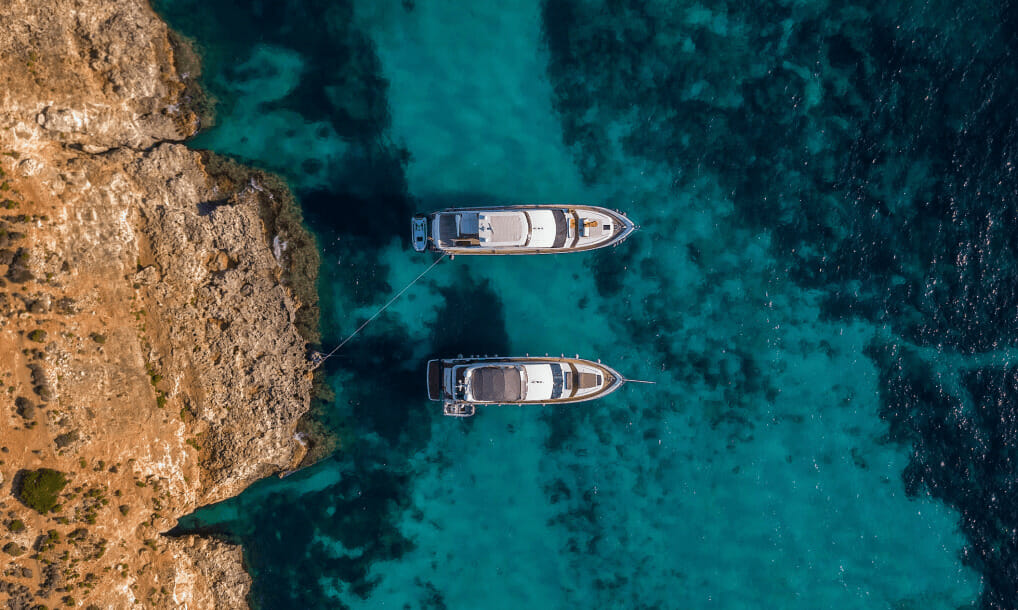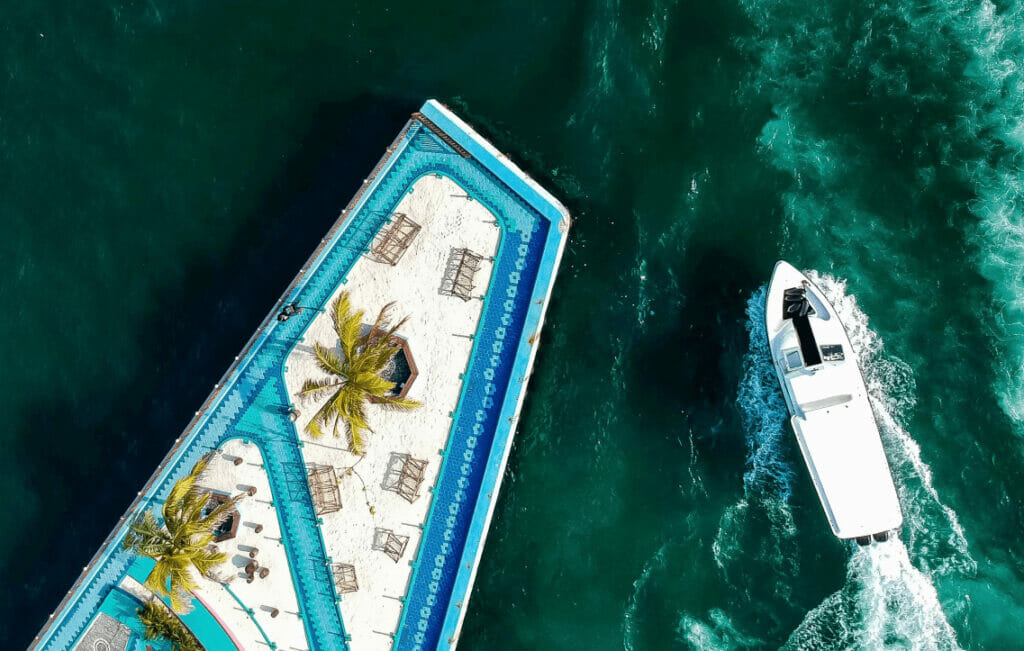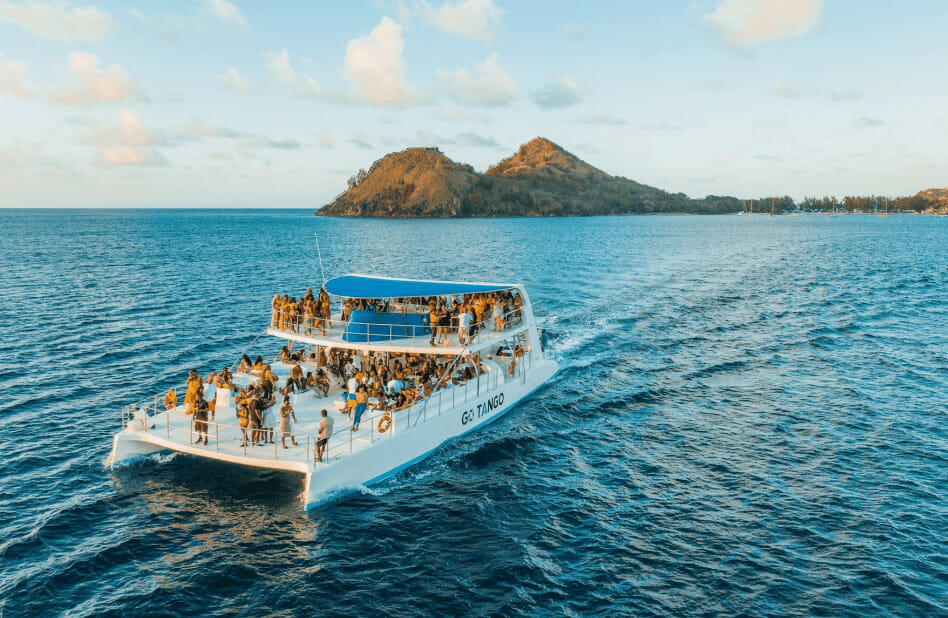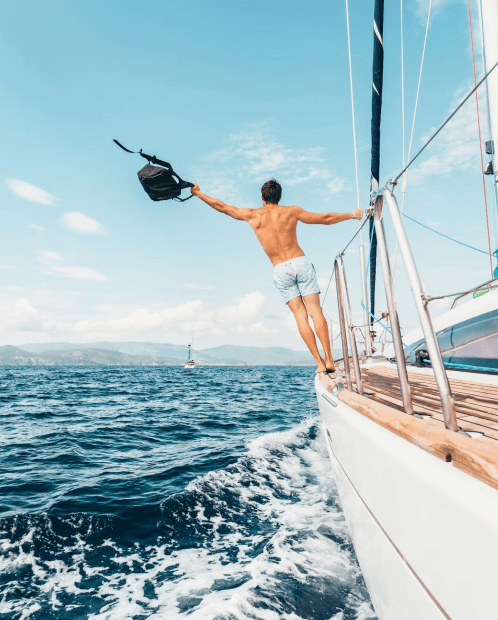
Table of Contents
Welcome to the world of yachting! You’re in the right hobby if you desire thrills and adventure. Yachting is a fantastic pastime that offers enjoyment for hobbyists of all skill levels and ages.
First of all, let’s define what yachting is. Yachting refers to the recreational activity of sailing or navigating a yacht, a recreational boat or a ship. Yachting can be enjoyed on a wide range of water bodies, including oceans, rivers and lakes.
Yachting has been a popular pastime for hundreds of years, with early examples dating back to the medieval period. Today, yachting remains a popular hobby around the world, with many people enjoying the thrill of navigating the open waters on their own yachts.
So, why should you consider yachting as a hobby? Many benefits to yachting make it an excellent choice for anyone looking for a fun and challenging hobby. Some benefits of yachting include improved physical fitness, increased mental clarity, and the opportunity to spend time outdoors in beautiful and peaceful surroundings.
In this blog, we’ll delve into the exciting world of yachting and provide you with everything you need to know to get started, whether you’re an experienced sailor or a complete beginner. So, let’s get started!
There are a variety of yachts and boats to pick from, each with unique features and characteristics. So whether you’re a newcomer or a seasoned sailor to the sport, there’s sure to be a yacht or boat that’s perfect for you.
Yacht Types
Two of the most popular types of yachts are sailing yachts and powerboats. Sailing yachts are propelled by wind power, while powerboats are powered by engines. Sailing yachts are ideal for those who enjoy the challenge of harnessing the elements, while powerboats are ideal for those who prefer a more relaxed and straightforward experience.
When choosing a yacht, it’s essential to consider a number of factors, such as:
- The size and cost of the yacht.
- The type of experience: If you’re interested in racing or competitive sailing, you might want to consider a racing yacht. On the other hand, a larger and more luxurious vessel might be more suitable if you’re looking for a more relaxed and leisurely experience.
There are pros and cons to both owning and renting a yacht.
Owning a yacht can be expensive and time-consuming, but it also offers the benefit of having your own boat to use whenever you want. Renting a yacht, on the other hand, is often more convenient and cost-effective, but it can limit the amount of time you can spend on the water. Therefore, weighing each option’s benefits and drawbacks is essential to determine the best option.
The difference between a yacht, super yacht and mega yacht
A yacht is a recreational water vessel that is generally used for sailing or power boating. Yachts come in various sizes and styles and can be used for recreational activities such as cruising, racing, or spending time on the water. Yachts can range in length from a few meters to more than 100 meters.
A superyacht, also known as a luxury yacht, is a larger yacht that is designed to offer extraordinary comfort and luxury. Superyachts are typically over 24 meters long and often used for extended voyages, high-end cruises, and other luxury experiences. They generally have features such as multiple staterooms, expansive living areas, state-of-the-art entertainment systems, and professional crew members.
A mega yacht is an even larger yacht, often over 50 meters long, designed to offer the ultimate in luxury and comfort. Mega yachts are typically custom-built and can include features such as helipads, swimming pools, spas, and other amenities. They are often used for extended cruises and are a popular choice for VIPs and other high-net-worth individuals who want to enjoy the ultimate luxury and comfort on the water.
In general, the main difference between these types of yachts is their size, luxury level, and intended use.
Explorer yachts
Explorer or expedition yachts are designed for long-distance voyages and exploration in remote and exotic locations. They are typically built to withstand harsh weather conditions and are equipped with advanced navigation, communication, and safety systems.
Explorer yachts are usually larger than traditional yachts, often with steel or aluminium hulls, and they typically have a more rugged and utilitarian appearance. They are built to provide maximum comfort and safety while exploring the world’s oceans and other remote locations.
Some Explorer yachts have a helicopter landing pad, a swimming pool, a cinema, and various features designed for luxury and comfort. They also typically have a larger crew to manage all aspects of the yacht, including maintenance, navigation, and entertainment.
Explorer yachts are famous among adventurous travellers and those who enjoy spending time in remote and exotic locations. Whether sailing to a remote island, exploring an isolated bay, or simply enjoying the peace and quiet of the open ocean, an explorer yacht provides the perfect platform for a truly unforgettable experience.

Which yacht sizes are legally allowed for single-owner usage?
The size of a yacht that can be legally used by a single owner without a crew varies depending on the country’s regulations. However, some general guidelines can be followed.
Typically, a single person can operate yachts less than 20 meters in length. Beyond this length, a crew is often required due to the increased complexity and size of the vessel. In addition, some countries may have specific regulations regarding the size of a yacht that can be operated by a single person and the qualifications required to do so.
Researching and understanding the local regulations and requirements in your area is essential before purchasing a yacht. It’s also advisable to consider the size of the yacht you feel comfortable handling and your own experience and skill level when operating a vessel.
If you are looking for a yacht for single-owner usage and don’t want to have a crew on board, there are several options to consider.
Small-sized yachts, such as sailboats and motorboats, are great for single owners. They are typically smaller in size, which makes them easier to manage and maintain without the help of a crew. These yachts can typically be handled by one person and are perfect for day trips or weekend getaways.
Mid-sized yachts, such as cruisers, are also suitable for single owners. These yachts are typically between 30 feet(9,144 meters) and 60 feet(18,288 meters) long and offer more space and amenities than smaller yachts. Some of these yachts may also come with features such as a galley, head (bathroom), and sleeping quarters, making them suitable for longer trips.
Larger yachts, such as catamarans or motor yachts, can also be suitable for single owners, depending on the owner’s experience and comfort level. These yachts typically have more space and amenities than smaller or mid-sized yachts and are designed for longer trips and extended stays on the water. However, owning and operating a large vessel can be more challenging and requires more experience, so it’s essential to make sure you have the necessary skills and knowledge before making the investment.
Ultimately, the best type of yacht for single-owner usage depends on your preferences, budget, and experience level. Before deciding, it’s good practice to research different options and consult a knowledgeable professional, such as a yacht broker or dealer, to find the yacht that best meets your needs.
Essential Equipment and Accessories
“Yachting is a fun and exciting hobby, but it also requires a certain level of preparedness to ensure a safe and enjoyable experience. One important aspect of yachting is having the right equipment and accessories on board. In this section, we’ll go over the essential items you’ll need for your yacht and give you tips on selecting the best equipment for your needs.
First, safety gear on board, such as life jackets, flares, and emergency beacons, is essential. These items can be the difference between life and death in an emergency situation, so it’s crucial to invest in high-quality gear that will keep you and your passengers safe.
Additionally, it’s important to have navigation equipment such as charts, a GPS system, and a compass to help you find your way on the water. Another vital aspect of yachting is ensuring you have all the essentials for a comfortable experience. This can include items like a cooler for drinks and food, a portable toilet, and a shade or canopy to protect you from the sun. It is good practice to have a tool kit and spare parts on hand in case any repairs need to be made.
Finally, it’s essential to consider how you will store and maintain your equipment and accessories when not in use. For example, you’ll want to ensure a secure storage area for your life jackets, navigation equipment, and other essentials. Proper maintenance and cleaning of your gear will also help ensure it’s in good working order when needed.
In conclusion, having the right equipment and accessories on board is essential for a safe and enjoyable yachting experience. Take the time to research the best gear for your needs and invest in high-quality items that will keep you and your passengers protected. Happy yachting!”
Yachting Skills and Knowledge
Yachting is a thrilling and exhilarating hobby, but it requires specific skills and knowledge to enjoy it safely and effectively. For you to get the most out of your yachting experience, it is crucial to have a good understanding of the basics of sailing and boating.
Basic Sailing and Boating Techniques
The most crucial yachting skills and knowledge include:
- Understanding wind direction.
- Navigating and steering the yacht.
- Understanding basic sail trim.
- Essential anchoring and mooring techniques.
- It’s also important to know how to handle emergencies, such as what to do if you run aground or someone falls overboard.
Tips for Improving Your Yachting Skills and Knowledge.
You can take sailing courses, read books and articles, watch videos, and practice on the water to improve your yachting skills and knowledge. You can join a sailing club or group and participate in organised sailing events and races. Additionally, you can seek out experienced sailors and boaters and ask them for advice and tips.
The Importance of Obtaining Proper Certifications and Licenses
In many countries, obtaining proper certifications and licenses is necessary to legally operate a yacht. These certifications and licenses demonstrate that you have the basic skills and knowledge to safely operate a yacht and can give you peace of mind when you’re out on the water. Some popular certifications include the International Certificate of Competence (ICC) and the RYA Day Skipper certificate.
Yacht Terms & Terminologies
- Mooring: Refers to securing a yacht to a dock or a buoy.
- Anchor: A device used to hold a vessel in place in water.
- Deck: The flat surface on top of a yacht where people can walk and sunbathe.
- Stern: The rear end of a yacht.
- Bow: The front end of a yacht.
- Port Side: The left side of a yacht when facing the bow.
- Starboard Side: The right side of a yacht when facing the bow.
- Gunwale: This is the upper edge of the side of a yacht.
- Keel: A structural member running along the centreline of a yacht’s bottom that provides stability.
- Rudder: A device used to steer a yacht.
- Mast: A vertical spar used to support sails.
- Boom: A horizontal spar used to control the angle of a sail.
- Sail: A fabric used to catch the wind and propel a yacht.
- Cleats: Small fittings attached to a yacht used to secure ropes or lines.
- Bimini: A canvas roof that provides shade on a yacht.
- Cockpit: The area in a ship where the steering and sailing controls are located.
- Galley: The kitchen area of a yacht.
- Berth: A sleeping place on a boat.
- Hull: The main body of a yacht, including the sides and bottom.
- Porthole: A small window on the side of a vessel.
Planning and Preparing for Yachting Trips
Going on a yachting trip is an exciting experience; proper planning and preparation can help ensure it goes smoothly. Before setting sail, it’s crucial to think about your destination, the necessary preparations for your yacht and crew, and how to navigate and manage any challenges that may arise during the trip.
How to Choose a Suitable Destination
When choosing a destination for your yachting trip, it is essential to consider the weather, the level of difficulty of the sailing conditions, and any local regulations and requirements. Some popular destinations for yachting trips include the Caribbean, the Mediterranean, and the South Pacific. You can also consider a trip along the coast of your home country to explore hidden gems and bays.
Considerations for Preparing Your Yacht and Crew for a Trip
Preparing your yacht and crew for a trip requires careful attention to detail. This includes ensuring that the vessel is in good working order, that all necessary equipment and supplies are on board, and that the crew is well-rested and ready for the journey ahead. It’s also important to consider the safety of your staff and guests, so be sure to bring along the necessary safety gear and navigation equipment.
Tips for Navigating and Managing Potential Challenges While on a Yachting Trip
During a yachting trip, preparing for any challenges is essential. This includes the necessary navigation equipment, such as a compass, GPS, charts, and supplies to handle emergencies. Additionally, having a good understanding of the local area and its regulations can help you avoid any issues and make the most of your trip. You can have a successful and enjoyable yachting trip with proper planning and preparation.

Popular yachting seasons worldwide
The length of yachting seasons can vary depending on the location and climate. In some regions, such as the Mediterranean and the Caribbean, the yachting season typically runs from late spring to early autumn, with the peak season being in the summer months.
The yachting season is shorter in other areas, such as the Pacific Northwest and New England. It typically runs from late spring to early fall due to the colder weather and harsher conditions during the winter months.
Some areas, such as the tropical regions, have year-round yachting seasons due to their consistently warm weather and calm waters.
It is essential to note that the duration of the yachting season can also depend on individual preferences and schedules, as some yacht owners and enthusiasts may choose to sail year-round or during off-peak seasons to avoid crowds and enjoy different experiences on the water. Examples of yachting seasons in different parts of the world:
- Mediterranean: The yachting season in the Mediterranean typically runs from May to October, with the peak season being in July and August.
- Caribbean: The yachting season runs from November to April, with the peak season around Christmas and New Year’s.
- Southeast Asia: The yachting season in Southeast Asia runs from November to April, with the peak season being from December to February.
- Australia: The yachting season in Australia typically runs from September to April, with the peak season being in December and January.
- New Zealand: The yachting season in New Zealand runs from November to April, with the peak season being from December to February.
- Africa: The yachting seasons in Africa can vary depending on the location and climate. For example, in South Africa, the yachting season typically runs from September to April when the weather is warmer and drier. In the northern parts of Africa, such as Egypt and Morocco, the best time for yachting is during the summer when the weather is warm and sunny. However, it’s essential to remember that weather conditions can be unpredictable, so it’s always best to check local weather forecasts and consult with local experts before planning a yachting trip.
- United States: In the United States, the yachting season varies depending on the location. The East Coast has a yachting season from May to October, with the peak seasons being in July and August. The West Coast has a year-round yachting season, with the best weather from June to September. The Gulf of Mexico has a yachting season from October to May, with the peak season being from December to April. The Great Lakes have a yachting season from May to October, with the peak seasons being July and August.
- United Kingdom: In the United Kingdom, the yachting season generally runs from March to October. However, this can vary depending on the weather conditions and the location of the yacht club. Some clubs may also offer activities and events during the winter months, but these are often more limited. It is good practice to check with local clubs and organisations for specific information on yachting seasons in the UK.
Yachting Community and Support
Yachting is not just a hobby but a lifestyle that attracts a close-knit community of enthusiasts. This community provides support, camaraderie, news and information for those interested in this exciting activity. Joining a yachting club or association is a great way to expand your knowledge and connect with like-minded individuals. With many clubs and associations available, you can participate in events, meetups, and races and receive tips and advice from experienced yachters.
There are numerous online resources and forums dedicated to yachting enthusiasts. These resources provide information on everything from sailing techniques to maintenance and a platform for discussion and exchanging ideas. In addition, yachting events and competitions are a great way to meet other yachters and showcase your skills. Finally, participating in these events is a great way to build your confidence and learn new techniques, whether you are a seasoned veteran or a beginner. So, check out what events are available in your area and enjoy the fun!
Conclusion
In conclusion, yachting is a thrilling and rewarding hobby that offers a unique blend of adventure, relaxation, and community. With its rich history, a diverse range of boats and yachts, and endless opportunities to explore new destinations, yachting is a hobby that promises to be both exciting and fulfilling.
To start your yachting journey, check out the Kumele Hobby Meetup application. This app is an excellent resource for meeting fellow yachters and learning about trips and local competitions. Additionally, plenty of resources are available online for learning more about yachting, such as online forums, articles, and instructional videos.
Whether you’re a seasoned sailor or a complete beginner, yachting is a hobby that’s accessible to everyone. So why not give it a try? With its endless opportunities for adventure, personal growth, and community building, there’s never been a better time to start your yachting journey. You may like our blog on meetups and why Kumele Hobby meetup stands out. from what’s out there.


